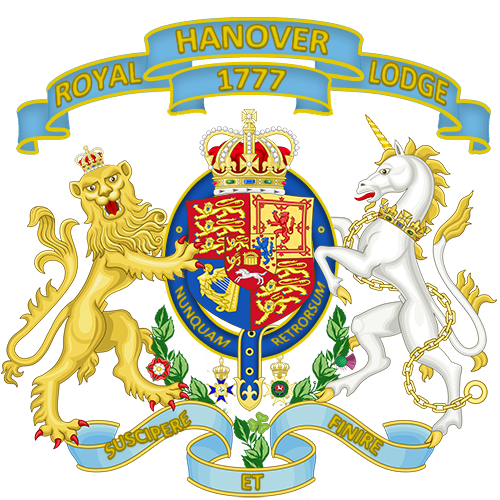How Royal Hanover Lodge earned the honour of becoming a Hall Stone Lodge.
In 1919 a special Meeting of the United Grand Lodge of England was held to celebrate peace and was attended by a vast number of Brethren. The M.W. Grand Master the Duke of Connaught made his first appeal to the Craft. He asked for funds to provide a Masonic Peace Memorial worthy of the Craft, and the Masonic havelion Memorial Fund was thus inaugurated. It was agreed that this memorial should be a building of a central home for Freemasonry on a site to be selected in London.
The Masonic Million Memorial Fund was then launched in September that year and brethren both at home and overseas were invited to contribute to raise the £1000,000 needed to finance the work.
The contributions from individuals and Lodges were to be recognised by the award of the Masonic Million Memorial Fund Commemorative Jewel.


Contributions to this Fund were to be entirely voluntary and were to be recognised by special commemorative jewels.
Masters of lodges contributing an average of ten guineas (£10.50) per member would be awarded the commemorative jewel such lodges would then be known as Hall Stone Lodges (thus giving the jewel its name) and their names and numbers were inscribed on commemorative marble panels in the main ceremonial entrance vestibule of Freemasons’ Hall, London. An illustration and photo of the Jewel is found below. It is represented as a winged figure representing Peace, holding a Temple. On the sides are inscribed the dates of the Great War as a reminder of the supreme sacrifice made by 3,225 English Freemasons.
Royal Hanover Lodge distinguished itself by qualifying as a Hall Stone Jewel Lodge on the 4th June 1924. No mean feat given the average weekly wage then was about £2.00. The sum donated by the Lodge was Five Hundred Guineas.

The Hall Stone Jewel worn by the Master of Royal Hanover Lodge on all Masonic occasions is transferred to the new Worshipful Master of the Lodge as is the right of every Hall Stone Jewel Lodge during the Lodge’s Installation meeting. The Jewel and light blue collar has been proudly worn by successive Masters of the Lodge since that time.
The Image below is a smaller version of the Hall Stone Jewel. This is appended to a dark blue ribbon and was worn on the left breast as you would a medal. These smaller jewels were given to individual freemasons for their personal contribution to the fund and were inscribed on the back with their name and lodge number. In total 30 members of the Royal Hanover Lodge received them.
Unfortunately, during the passing of time, none of these individual jewels are in the possession of the Lodge.
Completion of Freemasons’ Hall
Building work on the Masonic Peace Memorial, as it was at first called – later to become known as Freemasons’ Hall – had commenced in 1927 and was completed in 1933 when the Hall was dedicated. At the June 1938 Quarterly Communication of Grand Lodge the Special Committee presented its final report recording that the building had been handed over to the Board of General Purposes free from debt and that well over one million pounds had been subscribed to the Fund. The Fund itself was closed on the 31 December 1938.
The Memorial Shrine commemorates the 3,225 brethren who died on active service in the First World War and in whose memory the building was raised. The theme of the stained glass memorial window is the attainment of Peace through Sacrifice, with the Angel of Peace carrying a model of the tower of the building. The bronze memorial casket was designed by Walter Gilbert (1871-1946), who also designed the Victoria Memorial facing Buckingham Palace. The casket contains the memorial roll, viewed through a glass aperture at the corner of which are gilt figures representing the fighting services.




